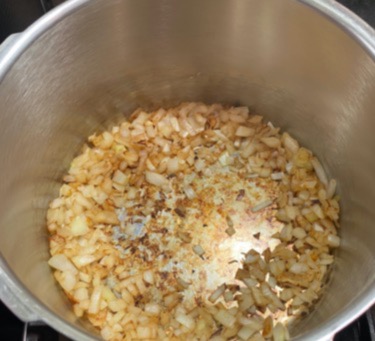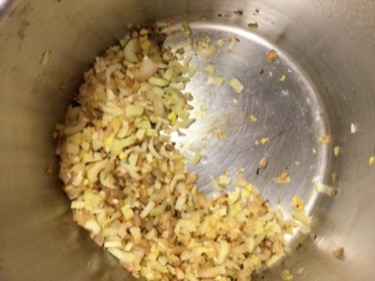Oil is not a necessary ingredient to brown onions. When we learn to cook without oil we cut back on consuming empty calories. There are two methods to achieve this:

- A popular method is to add a bit of water or broth the pan when the onions begin to stick. This method allows for the onions to steam cook.
- To truly roast onions, there is no liquid added to the pan until after the onions are nicely browned. This method takes a wee bit longer, but is well worth the time for the deep rich flavor achieved. When using this method, it’s a matter of learning how to regulate the stove top temperature with the type of cookware being used.
Three Steps
- Start with a hot pan or pot
- Caramelize
- Deglaze
It’s important to start with a hot pan or pot. Test the pan by doing the water test. Do this with a light sprinkle of water. When the pan is hot enough to sear, the water will dance around the pan in a little ball and then will quickly evaporate. That’s an indication that the pan is the perfect temperature and that’s when to add the onions.
Once satisfied with the caramelization, add the garlic and give it a quick stir. To release the caramelization from the pan, add other vegetables like celery, carrots and peppers. These vegetables have a lot of moisture and when added to a hot pan, they will automatically release their juice, thus will deglaze the pan without diluting the flavor. Another option would be to put a lid on the pan and temporarily remove from the heat. This will also produce condensation and the caramelization will release within 8 to 10 minutes as pictured below.

Once the caramelization has released, then carry on with your favorite recipe.